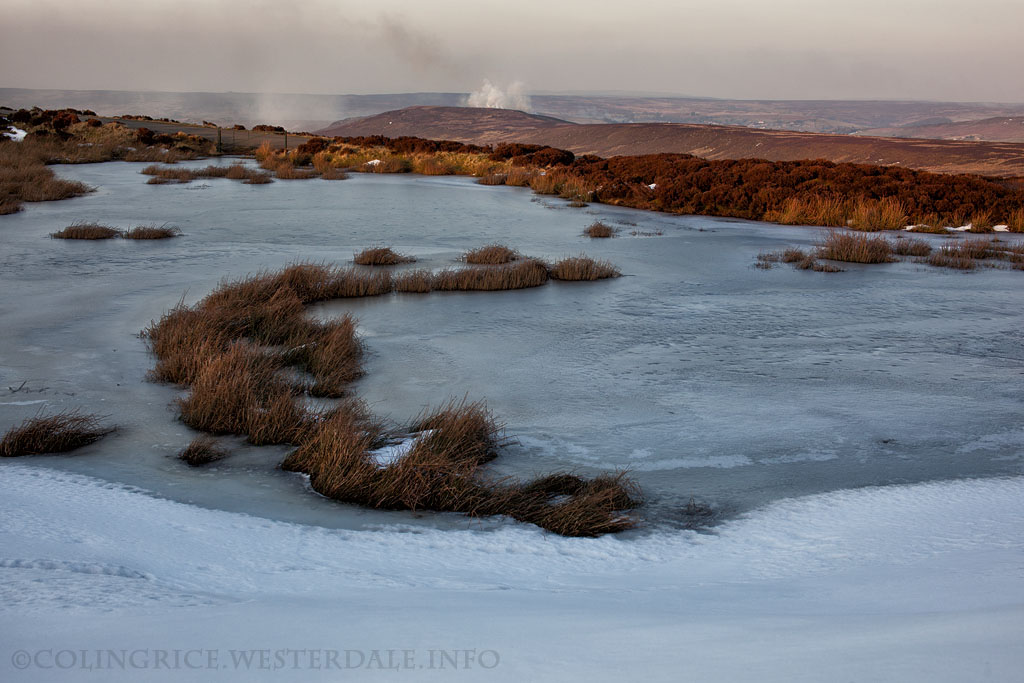Or Ice and Fire, the title sounds better!
As we are now well into February the sun has some power, humidity and dewpoints have dropped enough that the heather which covers most of the moors can be burnt in a controlled way without igniting underlying peat.
This burning on a rotation of 15 to 20 years stops scrub invasion and provides a mosaic of different ages of heather - which is good for sheep, wildlife and grouse game birds.
It also reduces the chance of a devastating large fire during summer dry spells.
It's thought the practice goes back to the earliest human advance following the last ice age - so the moorland landscape is largely a manmade creation but over such a long period that the local fauna and flora have come to depend on the management, maintaining a niche habitat which is quite unusual on a global scale.
Without the scheduled burning, large areas would gradually be covered with rather sparse tree cover - mostly birch, mountain ash and eventually oak.
Temperatures are still hovering round freezing point after a decidedly chilly winter.
